Bio-Pulse | Diego Suarez Traverso and Bart Chompff
Project Bio-Pulse originated from the BioDesign Laboratory, part of the Master Advanced Design and Digital Architecture (ADDA) from the Elisava – University of Pompeu Fabra.
In the field of architecture we are forced to regain the sensitivity in observation and research, and learn the lessons of nature on the act of formalizing and metabolizing. Our objective is to learn and explore this knowledge to then transfer it and apply it to the design process of architecture and spaces.
This new approach to the creation of form through knowledge of material, and of its intelligent behavior, complemented by the use of parametric software and advanced modelling, will enable us to produce designs that are not only totally innovative in material and behavior, but also able to adapt to their environment.
In short, we will learn that the limit between natural and artificial has been reconsider from the perspective of biomimetic engineering. The project was designed and developed by: Diego Suarez Traverso and Bart Chömpff.
“Self-organisation is a set of dynamical mechanisms whereby
structures appear at the global level of a system from interactions
of its lower-level components”
-Bonabeau et al, in Swarm Intelligence, 1999
The concept of emergence
– Emergence appears in intelligent and non-intelligent beings
– Emergence is based on the closest neighbour principle
– There is no hierarchal structure or leader involved
– Emergence is based on bottom up and self-organisation
– Emergence gives rise to complex patterns based on simple interactions
The Challenge
– Ability to support and adapt to the natural behaviour of urban citizens in park areas
– Ability to sense and react to different stimuli.
– Ability to create architectural space
– Ability to facilitate various site related activities
– Ability to function in small or large proliferation
Component Definition
At the lowest levels of complex systems single
components are created and linked together to create a larger whole. Each local component is able to operate on simple dynamic rules that provide the individual and
therefor the global with dynamic properties.
The Site
Human behavior that emerges in natural areas is related to the following studied factors.
– Routing
– Proximity
– Solar radiation
The self-organization of individuals that occurs is based on simple but yet distinctive patterns.
Sensoring
Movement of the proliferation, its branches and its lower level components are based on the path of the sun and the proximity of human beings.
Movement Phases
The system was studied with analog and digital modelling that provided the team to experiment and study different phases of movements of a single branch of the proliferation.
Super positioning
The maximum curvature of the system super positioned in different phases of its movement.
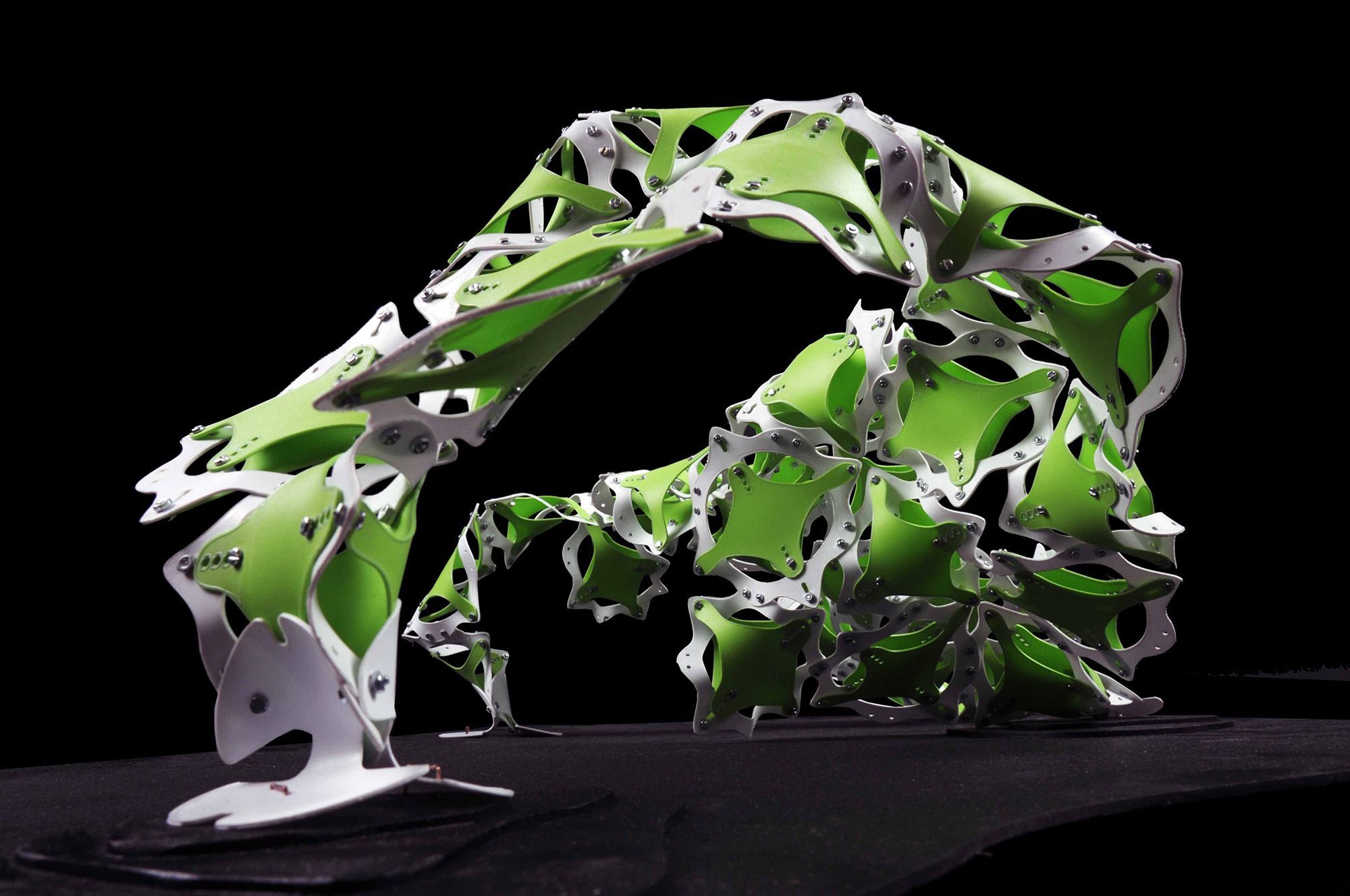
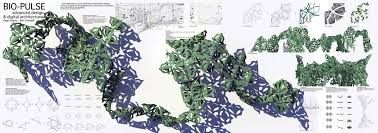
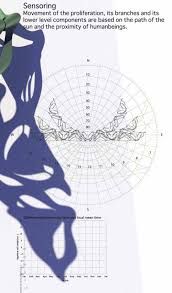
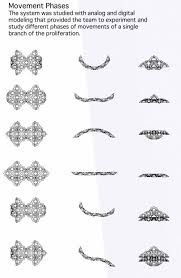

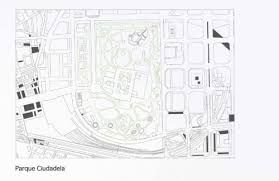
Designed and developed by: Diego Suarez Traverso and Bart Chompff
University: Elisava (Pompeu Fabra) – Barcelona
Master: Advanced Design and Digital Architecture
Program Director: Jordi Truco
Vimeo: https://vimeo.com/40416219
Issuu: http://issuu.com/diegosuareztraverso/docs/adda

